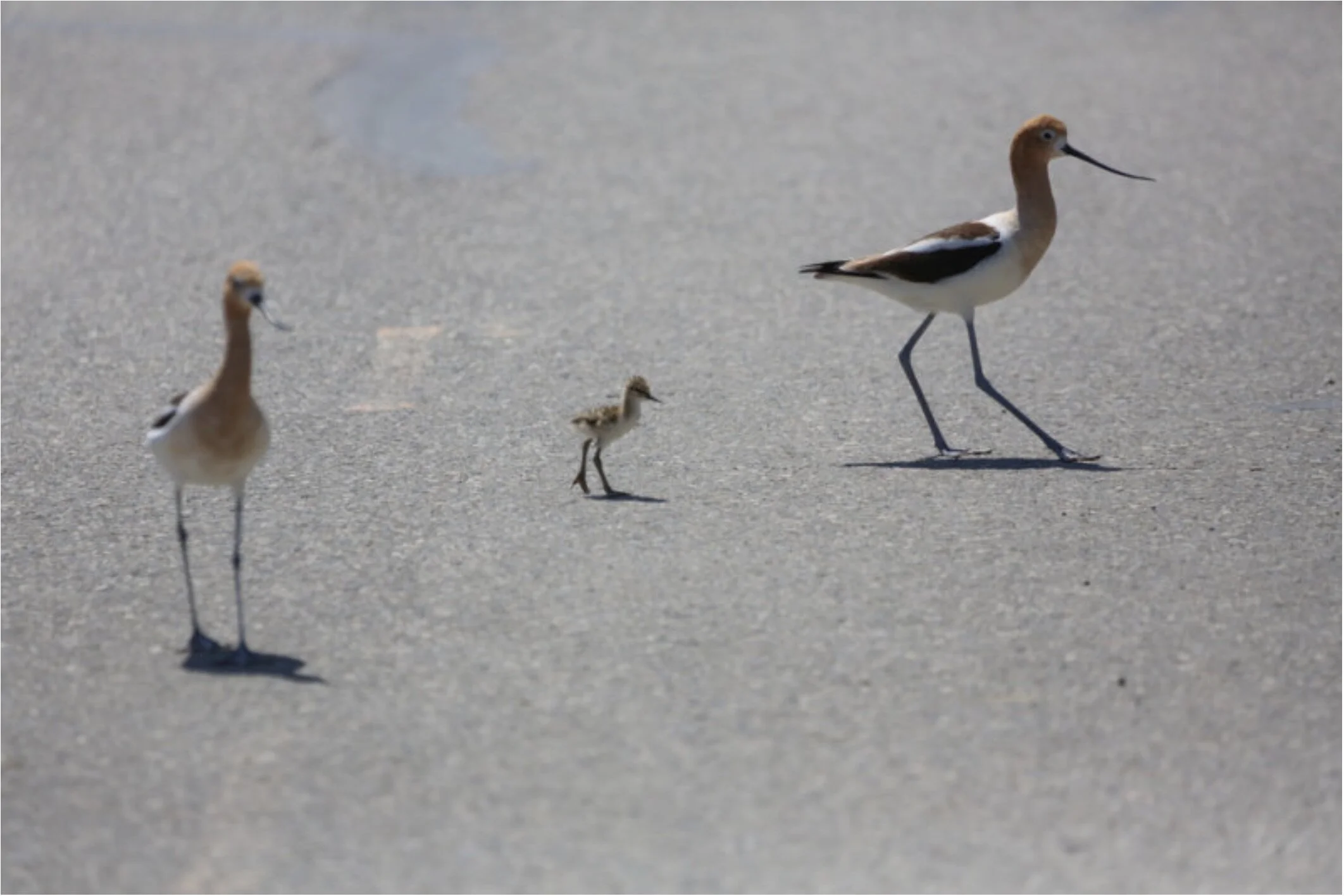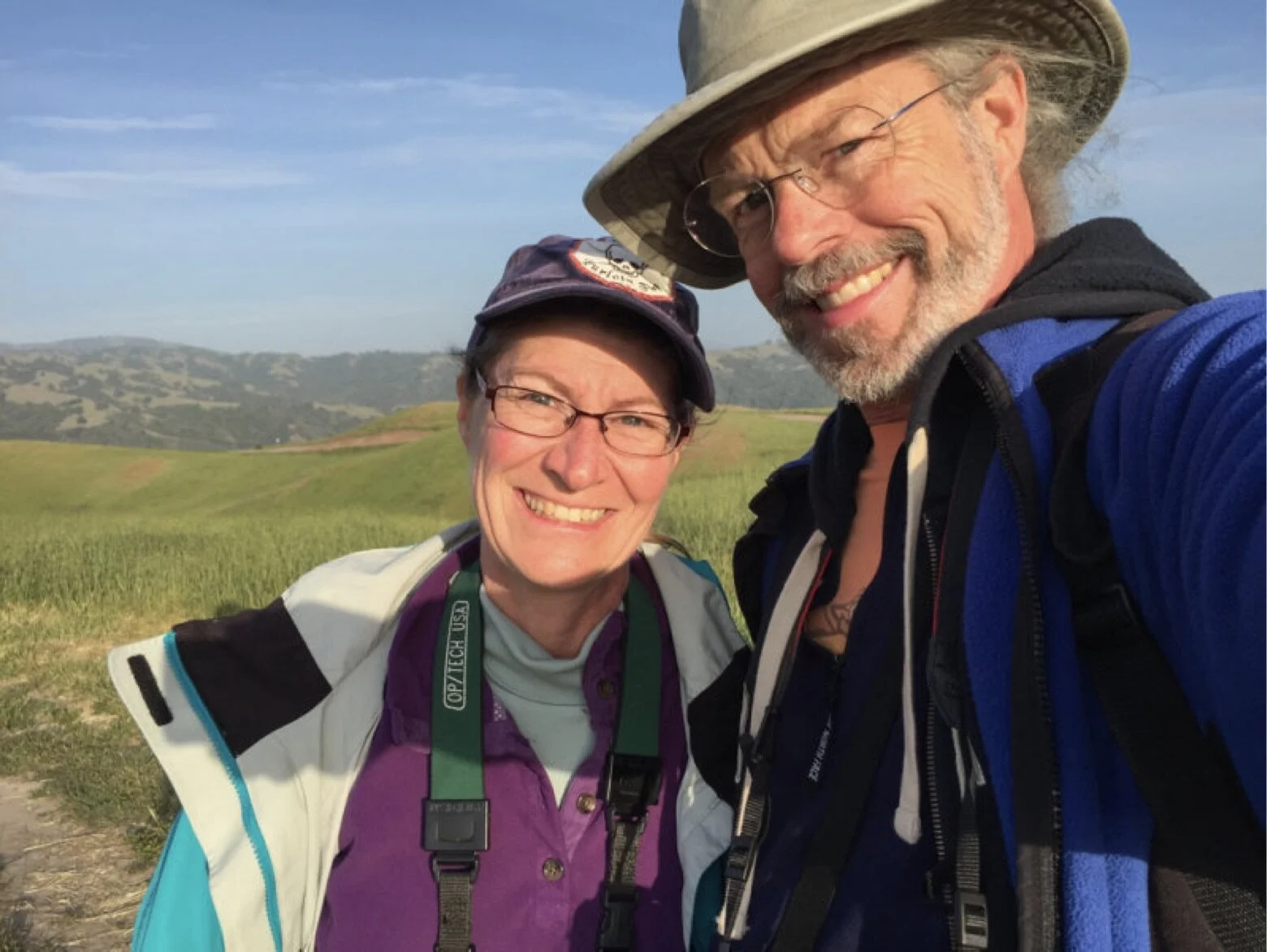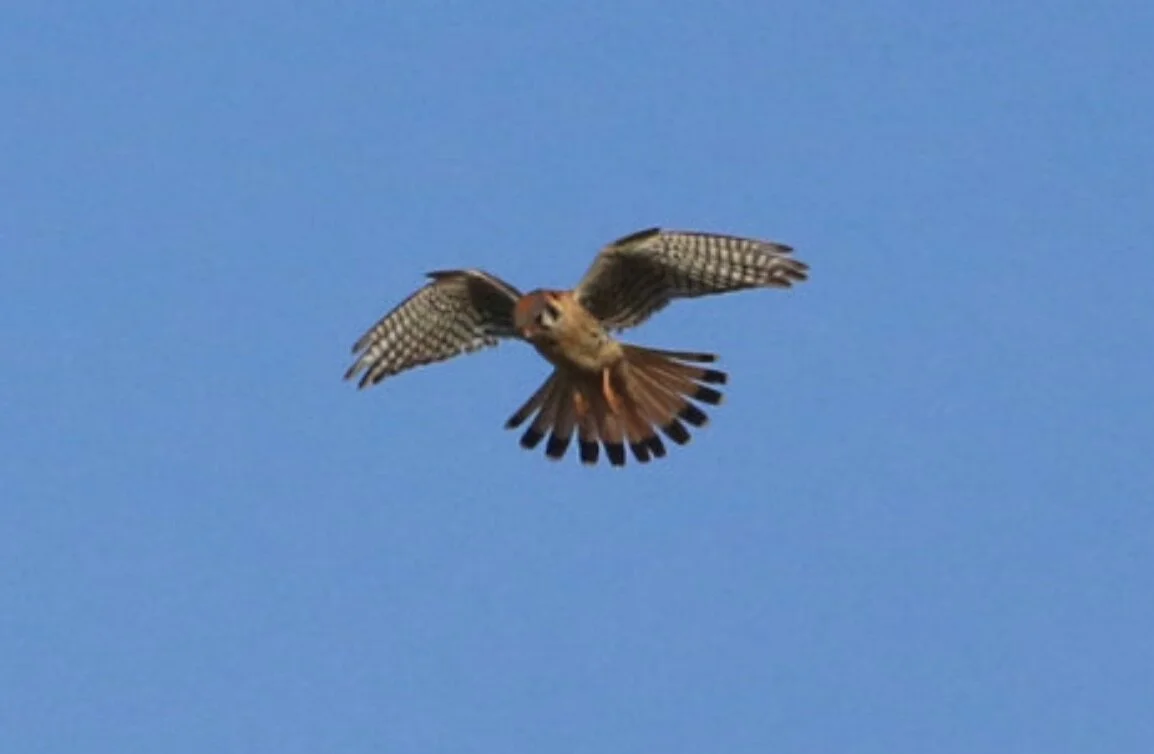The Jack Sparrows Spring 2015 Birdathon
Letter to our supporters:
Dear friends, family and colleagues,
On Thursday, April 23, The Jack Sparrows (that’s Ginger and me) will again be doing a full day Birdathon in support of the Santa Clara Audubon Society. This is our twelfth time participating in this fun event.
And like last year, we don’t know what the birds will be up to: the drought continues and that affects bird populations, locations and behaviors. We keep having early summer-like days which may encourage the birds to migrate early, but then, it’s all speculation at this point. We are still hearing Cedar Waxwings, White-crowned Sparrows and Pine Siskins in our neighborhood — will they linger for another month? We’ll see...
As usual, we plan to hit as many different habitats as possible, starting out before dawn and ending after dark, all while keeping within the county boundaries and the 24-hour time limit. Our goal is to identify at least 120 species and photograph at least 100 species.
If you’d like to help, please consider sponsoring our team (The Jack Sparrows), or Ginger or Barry individually. All donations go to help the Santa Clara County Audubon Society's science education programs and conservation efforts. All pledges are tax deductible, as the Santa Clara Valley Audubon Society is a 501(c)(3) non-profit organization. For more information, see http://www.scvas.org/index.php?page=text&id=birdathon. If you would like to support this cause, you can send Barry email pledging an amount per species (e.g. 25¢/species seen or species photographed) or a fixed amount or any special pledges (e.g. $1 for every bird of prey, etc.). You can also donate via PayPal by clicking the "Donate Now" button at http://www.scvas.org/index.php?page=text&id=birdathon_sponsor
For those of you whose places of employment have corporate matching (Apple is one), you can get your company to match whatever you donate.
Last year we were in the top five for raising money for the Audubon Society and Barry ranked second in species photographed (107 species). We got rained on a lot last year, and you know, we’re okay with that happening again this year — we could really use the rain! Last year's official results are at http://www.scvas.org/index.php?page=text&id=birdathon_results .
Our previous years' adventures are documented at http://www.voyageropen.org/nature/birding/ . Here's a summary:
2014: The Jack Sparrows were back doing 24-hour a birdathon, identifying 122 species; photographing 107 species
2013: The Jack Sparrows did a short 4-hour birdathon, identifying 92 species and photographing 64 species
2012: Barry birded with the Varied Twitchers, identified 170 species and photographed a record 125 species
2011: The Jack Sparrows again competed, saw 118 species and photographed 99 species
2010: The Jack Sparrows return to find 119 species
2009: Barry birded with the Varied Twitchers, but only got a half-day in as he was sick (120 species)
2008: The Jack Sparrows won the "most eco-friendly" birdathon category (129 species)
2007: Second birdathon for the Jack Sparrows (126 species)
2006: The Jack Sparrows' first birdathon (125 species)
2005: The Varied Twitchers birdathon (157 species)
2004: Barry's first birdathon was with the Varied Twitchers in 2004, which is documented at http://www.voyageropen.org/nature/birding/birdathon_spring_2004/ (158 species)
Thank you for all your support in years past and we are excited about another fun birding adventure this year.
Barry & Ginger Langdon-Lassagne
The Jack Sparrows!
p.s. Please feel free to forward to anyone you think might be interested.
~
You can also view all of the photos from this Big Day.
April 23, 2015
This is a journal of our Big Day Spring Birdathon, a fund-raiser to support the Santa Clara Valley Audubon Society where teams compete to see the most species in the county in a single day. Our self-organized team is called "The Jack Sparrows" and consists of Ginger and me. We birded from 4:30am until sundown. I've included our day list, compiled from our notes taken along the way, interspersed with some stories of our adventure, my thoughts, and some of the pictures we took. The full set of pictures for our adventure can be found at http://www.pbase.com/wilmot/birdathon_2015_spring.
There's a moment, as I wake up just before the 3am alarm goes off, when I ask myself "can I do this?" Then I remember why I'm doing this: the excitement of the chase, connecting with Nature and supporting a cause I strongly believe in: environmental education. Then the alarm buzzes and I hit the snooze button: all of that can wait a few more minutes.
We're packed and out the door by 3:30am. We are nearly the only ones on the road, on the freeway, and definitely the only ones on Alpine Road as we wind up toward Monte Bello Open Space Preserve. Two-thirds of the way up the road, we were surprised by our first animal of the day — not a bird, but a native Gray Fox, that ran across the road, evaluated us and disappeared into the bushes. We hadn't seen a fox in years, so that got us excited!
4:13am Gray Fox! Foothill Park entrance
The night had been clear in the valley, but as we suspected, there was fog along the ridge top. As we started down the tree-lined trail we felt raindrops, but it wasn't raining. We quickly realized that the oak trees were catching the fog and condensing it with their leaves, which then dripped down onto us and the trail. Even in a drought, the oak trees find a way to water themselves. We thought about water a lot, and how California's wildlife has been through many droughts before and come out just fine. Certainly these oak trees, with their circles of self-made rain, would make it through.
Monte Bello Open Space Preserve
4:29am 46°F at Monte Bello. Foggy and calm
4:53 western toad, western chorus frog
At first there was no sound on the trail but our footsteps and our breathing. The frog calls became clearer as we passed a marshy spot. And then we heard our first bird of the day: Western Screech-Owl. It was calling down in the canyon below us, faintly at first, but later came in louder and clearer. We heard at least two screech-owls as we hiked, as well as the distant booming of Great Horned Owls.
1 4:56 Western Screech-Owl!
2 4:59 Great horned Owl
3 5:17 Black-throated Gray Warbler
5:28 California newts on the trail
California newts, a native relative of salamanders, come out when it's wet outside. Apparently the fog and the dripping from the trees was enough for them, as we saw many newts along the trail as we hiked. We shone our headlamps along the trail in front of us to make sure that we did not tread on any of them.
4 Steller's Jay
5 Spotted Towhee
6 American Robin
7 Black-headed Grosbeak
We were about 1 1/2 miles in, up the Indian Creek Trail on the west side of Black Mountain where the oak, bay and douglas-fir trees give way to chaparral and California lilac bushes, when we decided to descend back into the forest for the greater diversity of birds.
8 5:58 Chestnut-backed Chickadee
9 California Quail
10 Bewick's Wren
11 California Towhee
Before 6am the "dawn chorus" had started up. We started counting birds by their call, most of which we would see later in the day. But identifying by call alone counts on a birdathon, so long as you can reliably identify the species. Unfortunately, there were a few birds we never could identify.
6:12 unknown caller “sweet" x 8
12 Orange-crowned Warbler
6:17am saw first bird American Robin
Dawn came slowly through the fog, but soon we were able to avoid the newts without needing flashlights.
Barry at dawn
Ginger at dawn
13 Dark-eyed Junco
14 Mourning Dove
15 American Crow
16 6:34 Brown Creeper
17 Lego (Lesser Goldfinch)
Down the Skid Road Trail we connected with Stevens Creek and started to hear riparian birds such as the Pacific-slope Flycatcher and, one of our favorites, Pacific Wren. The creek was low, but running.
18 Pacific-slope Flycatcher
19 Pacific Wren
20 Downy Woodpecker 6:41
21 Acorn Woodpecker
22 Purple Finch
23 6:59 Band-tailed Pigeon
24 Yellow-rumped Warbler
25 Pygmy Nuthatch
26 Warbling Vireo
Fog at the top of Monte Bello Open Space Preserve
Walking up the Stevens Creek Nature Trail, Stevens Creek was dry. It had been running last year, but last year we were hiking in the rain in this same spot. This part of the creek probably doesn't stay running for long after the rains stop, as this is where the creek starts its journey down toward Mountain View and the bay.
27 Ash-throated Flycatcher
28 European Starling
29 Western Bluebird
30 Common Raven 8:08am
31 Western Scrub-Jay
32 Bushtit
33 Wrentit
34 Anna's Hummingbird
35 Northern Flicker 8:19
36 Song Sparrow
Back at the car we broke out the thermos of coffee, changed out of our dew-soaked socks and I took the first bird photo of the day: Western Bluebird. Then we headed down the hill to Arastradero.
Arastradero Preserve
37 Red-shouldered Hawk
38 Golden-crowned Sparrow
39 White-crowned Sparrow
40 California Thrasher
41 White-tailed Kite
42 Cedar Waxwing
43 Nuttall's Woodpecker
44 Western Kingbird
45 BBB (Brewer's Blackbird)
46 Brown-headed Cowbird
47 Blue-gray Gnatcatcher
48 Barn Swallow
49 House Wren
50 HOFI (House Finch)
51 Rock Pigeon 9am
52 House Sparrow
Arastradero turned out to have a bounty of birds, even though we didn't stay long. Several, such as the gnatcatcher and House Wren we saw here and nowhere else.
We stopped at home briefly, and for the first time birded our local suburban neighborhood as part of the birdathon. It was fun, although a lot of what we saw were repeats from earlier in the day. I did manage to photograph the Cedar Waxwings, which turned out to be one of the more common birds of the day — surprising to me, since years ago they used to be gone by this time of year, migrating back north to Canada. They've been staying longer and longer, as the years pass.
Home Neighborhood
53 Mallards over Lochinvar Ave.
54 9:20 Northern Mockingbird
55 Killdeer - Corn Palace field
56 9:42 Ring-billed Gull
We stopped at McClellan Ranch for a brief look at the bird feeders. There we got a White-breasted Nuthatch which we otherwise would have missed for the day.
McClellan Ranch (Audubon headquarters)
57 Black Phoebe
58 10:22 White-breasted Nuthatch
59 Northern Rough-winged
60 Swallow Violet-green Swallow
61 Oak Titmouse
We drove past Stevens Creek Reservoir, noting how full it was! Last year it was just a puddle; this year it looked like it was filled to capacity. I don't know whether the drought was the reason it had gotten low, or whether they had been doing work on it. But it was great to see the water level so high again! We parked at the upper end and hiked down to a patch that was completely dry last year. This year we had to be careful not to fall in the lake.
Stevens Creek Reservoir, upper end
62 Hairy Woodpecker
63 Double-crested Cormorant
64 Western Tanager
65 TV (Turkey Vulture)
Warbling Vireo (photographed)
On the drive back out of Stevens Creek Canyon, we stopped and scanned the lake for birds.
Stevens Creek Reservoir
66 Canada Goose
67 Red-tailed Hawk
68 American Coot
69 Pied-billed Grebe
Then we surged down the freeway toward the bay, munching on sandwiches and snacks in the closest thing we've had to a break so far in the day. It wasn't yet noon.
Palo Alto Duck Pond (at Palo Alto Baylands)
70 Bufflehead
71 Greater Scaup
72 California Gull
73 Cliff Swallow
74 BCNH (Black-crowned Night-Heron)
75 Greater Yellowlegs (and possibly Lesser Yellowlegs? We were never sure enough to add it to our numbers)
76 Ruddy Duck
77 Gadwall
78 Forster's Tern
79 Bullocks Oriole
As usual for the baylands, the bird species came so fast it was hard to write them all down in a timely manner. The variety of birdlife is just amazing at all of the places we stopped. If you ever want to see a lot of birds, go to any of the bay parks: Palo Alto Baylands, Charleston Slough, Alviso, etc. It was low tide, so there weren't many shorebirds in close, but we got a few.
Palo Alto Baylands
80 Black-necked Stilt
81 American Avocet
82 Marsh Wren
83 Snowy Egret
Emily Renzel Wetlands
84 Northern Shoveler 12:50pm
85 Green Heron
86 Common Yellowthroat
87 Dowitcher (Long-billed or Short-billed)
88 American Wigeon
89 Great Egret
90 Willet
American Avocets with chick at Shoreline Lake
Charleston Slough
91 Common Gallinule
92 Marbled Godwit
93 Black-bellied Plover!
94 Semipalmated Plover
A Black-bellied Plover, in full alternate plumage, was a welcome surprise. We had good looks of it through the spotting scope.
Shoreline Lake
95 Surf Scoter 1:39pm
96 Black Skimmer
I don't think we expected to see much at the Alviso Marina. We were hoping to hear a rail calling in the reeds. That didn't happen, but we did find many great birds on the salt pond. I was most excited about the phalarope, as I thought they would have already migrated away by this time. The Eared Grebes in their fine alternate plumage were also a beautiful sight though our spotting scope.
Alviso Marina County Park
97 Eurasian Collared Dove
98 Eared Grebe
99 Western Sandpiper
100 Least Sandpiper
101 Dunlin
102 Wilson's Phalarope!
Panorama of the boardwalk at Alviso’s Environmental Education Center
EEC (Environmental Education Center at Alviso)
103 Cackling Goose
104 Savannah Sparrow
105 Great Blue Heron
Sandy Wool Lake at Ed Levin County Park was basically empty, much to our surprise. That limited the water birds we might see, but we still got our Tree Swallow and a Spotted Sandpiper. What makes one reservoir empty while another is almost full? Where do the birds go when the lake dries up?
Ed Levin County Park
106 Wild Turkey - Ed Levin 3:50
107 RWBB (Red-winged Blackbird — FINALLY!! Very late in the day for such a common bird.)
108 Spotted Sandpiper
109 Tree Swallow
We drove out Calaveras Road looking for Yellow-billed Magpies and other east-hills birds. The magpies were there, which was nice, but we decided that scoping Calaveras Reservoir wasn't going to be worthwhile, so we turned around to try Marsh Road.
Calaveras Road is narrow and winding, and there were commuters heading to the East Bay all along the road. We were the only ones headed west, so we had to be extra cautious to not get in the way of the commuters.
Calaveras Road, Marsh Road
110 Yellow-billed Magpie 5pm
Ginger on the trail at Sierra Vista Open Space Preserve
Our last stop of the day was the top of Sierra Road. This is a regular spot for us and has often given us interesting birds. This year there was something very different from all the previous years: a paved parking area and newly-made hiking trails! Sierra Vista Open Space Preserve is, in my opinion, one of the most beautiful spots in the bay area. We were there as the sun was going down, so the lighting was especially beautiful. And it wasn't too windy today, nor was it pouring rain as it had been last year. We hiked on the Aquila Loop Trail, which was newly opened, along with the parking lot, last August. There we had stunning views of the hillsides with wildflowers and ancient oak trees, Mount Hamilton to the southeast, and the entire south bay to the west below us. On this trail we found a family of Rock Wrens, with one parent feeding two babies. Rock Wren is a fairly rare bird in our county, so seeing one feeding young was extra special.
Adult Rock Wren at Sierra Vista Open Space Preserve
Rock Wren feeding young
Ginger and Barry on The Aquila Loop Trail
Sierra Road - Sierra Vista Open Space Preserve
111 Western Meadowlark
112 5:23 American Kestrel
American Kestrel
113 Horned Lark! Sierra Azul Aquila Loop 5:48
114 Rock Wren family with parent feeding two young
115 Lark Sparrow!
Lark Sparrow
The Lark Sparrows, one of the more brightly colored sparrows in California, were sitting in the oak trees which also harbored Western Kingbirds (bright yellow) and Bullock's Orioles (stunningly bright orange and black).
Aquila Loop Trail at Sierra Vista
We hiked the Sierra Vista Trail after completing the Aquila Loop Trail, but we saw no new birds after the Lark Sparrow. There was a haze in the air obscuring the city below, and the sun was going down toward the western hills where we had started our day. The sun had a pair of bright sun dogs glowing on either side, along with a faint ring and a pillar of light, all caused by ice crystals in the upper atmosphere: a harbinger of rains that would come the next day.
Sunset with sun dogs and 22º halo
Total species for the day: 115
Hours birding: 4:30am to 8pm
Barry & Ginger
The Jack Sparrows
~













